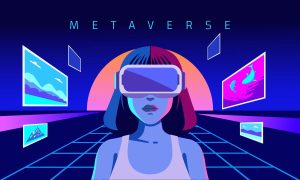
How Virtual Reality Technologies Are Used Today: Three Ways
Virtual reality (VR) technology has come a long way since its inception. Initially perceived as a futuristic concept, VR has now become a tangible and increasingly accessible tool used in various industries. With advancements in hardware, software, and user experience, virtual reality is finding its place in our daily lives.
Let’s explore three key ways VR technologies are being used today.
Entertainment and Gaming:
One of the most prominent applications of virtual reality is in the realm of entertainment and gaming. VR headsets and immersive experiences have revolutionized the way we engage with digital content. Gamers can now step into virtual worlds and interact with characters and objects as if they were physically present. This level of immersion enhances the gaming experience, making it more captivating and realistic.
From thrilling adventures to immersive simulations, VR gaming offers a new dimension to the world of entertainment.
Moreover, VR has extended beyond gaming, providing immersive experiences in the form of virtual tours and interactive storytelling. Museums, theme parks, and cultural institutions are adopting VR to offer visitors an opportunity to explore distant locations or historical events without leaving their seats. Virtual reality cinemas and concerts are also becoming popular, allowing audiences to enjoy movies and live performances from the comfort of their homes.
Training and Education:
Virtual reality is transforming the way we learn and acquire new skills. In various fields such as medicine, aviation, and the military, VR is being used to simulate complex scenarios and provide realistic training environments. Surgeons can practice intricate procedures in virtual operating rooms, pilots can train in flight simulators that mimic real-life conditions, and soldiers can undergo combat simulations without any physical risk.
The immersive nature of VR allows learners to actively engage with the material, increasing retention and understanding. Educational institutions are leveraging VR to create interactive lessons, enabling students to explore scientific concepts, historical events, and even visit virtual replicas of famous landmarks. This technology has the potential to democratize education by providing access to experiences and resources that may otherwise be limited by geographical or financial constraints.
Healthcare and Therapy:
Virtual reality is making a significant impact on healthcare and therapy. It is being used to treat various physical and mental conditions by creating immersive and controlled environments. For example, VR exposure therapy helps patients overcome phobias and anxieties by gradually exposing them to their fears in a virtual setting.
This approach provides a safe and controlled environment for individuals to confront their fears and gradually build resilience.
In addition, VR is being used in pain management by distracting patients from discomfort during medical procedures. By immersing patients in virtual worlds, healthcare providers can alleviate pain and reduce anxiety levels. VR is also used for rehabilitation purposes, helping individuals recover from injuries or strokes by engaging them in interactive and motivating exercises.
Furthermore, VR is aiding in medical research and surgical planning. Doctors can visualize patient-specific data in a virtual environment, allowing for better understanding and planning of complex procedures. VR also enables remote collaboration among medical professionals, facilitating knowledge sharing and expertise exchange.
In conclusion, virtual reality technologies have found applications in various sectors, revolutionizing the way we entertain, educate, and provide healthcare. The immersive and interactive nature of VR enhances experiences and offers opportunities that were once unimaginable. As technology continues to evolve, we can expect virtual reality to become even more integrated into our daily lives, unlocking new possibilities and transforming industries across the board.

